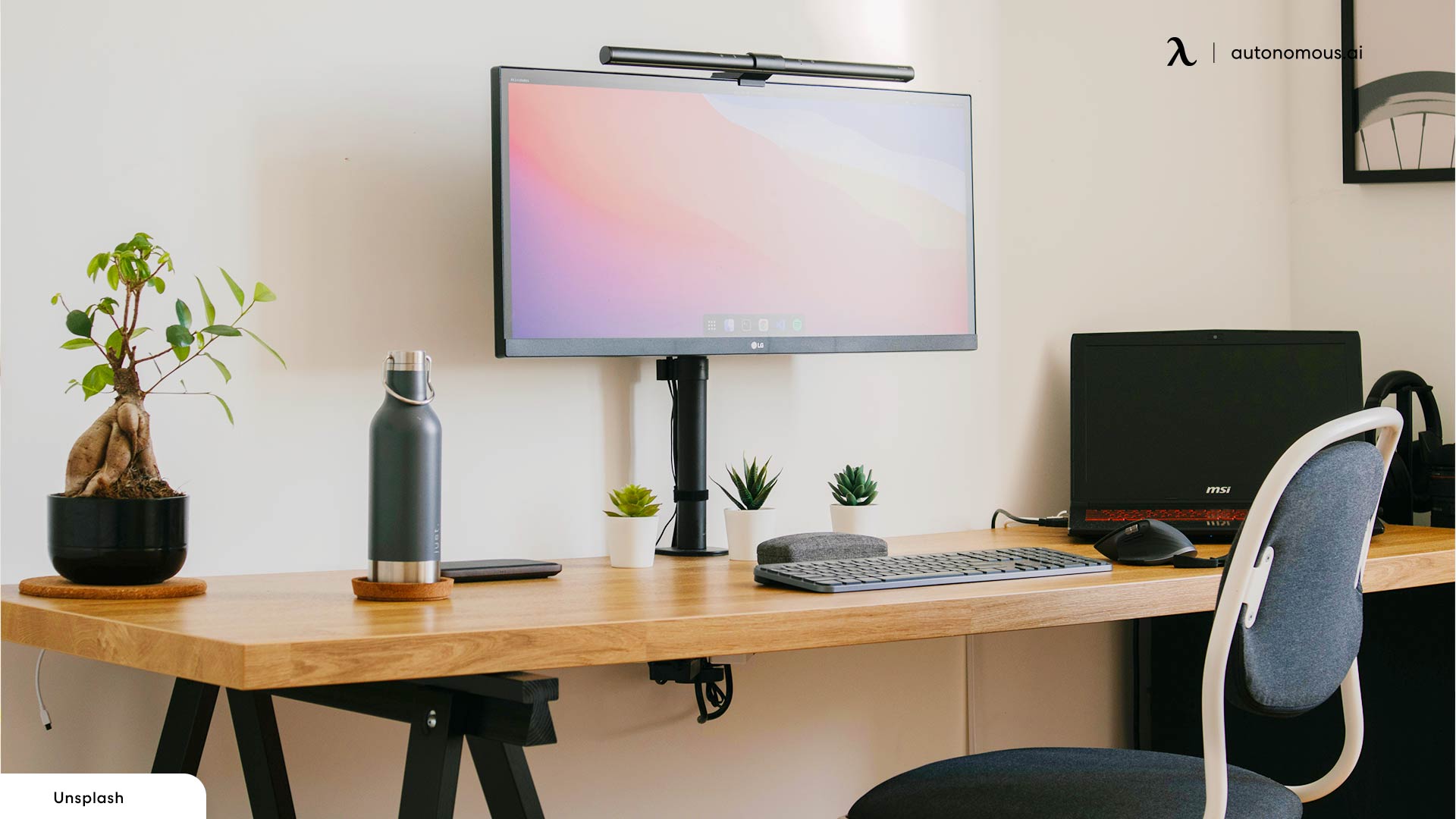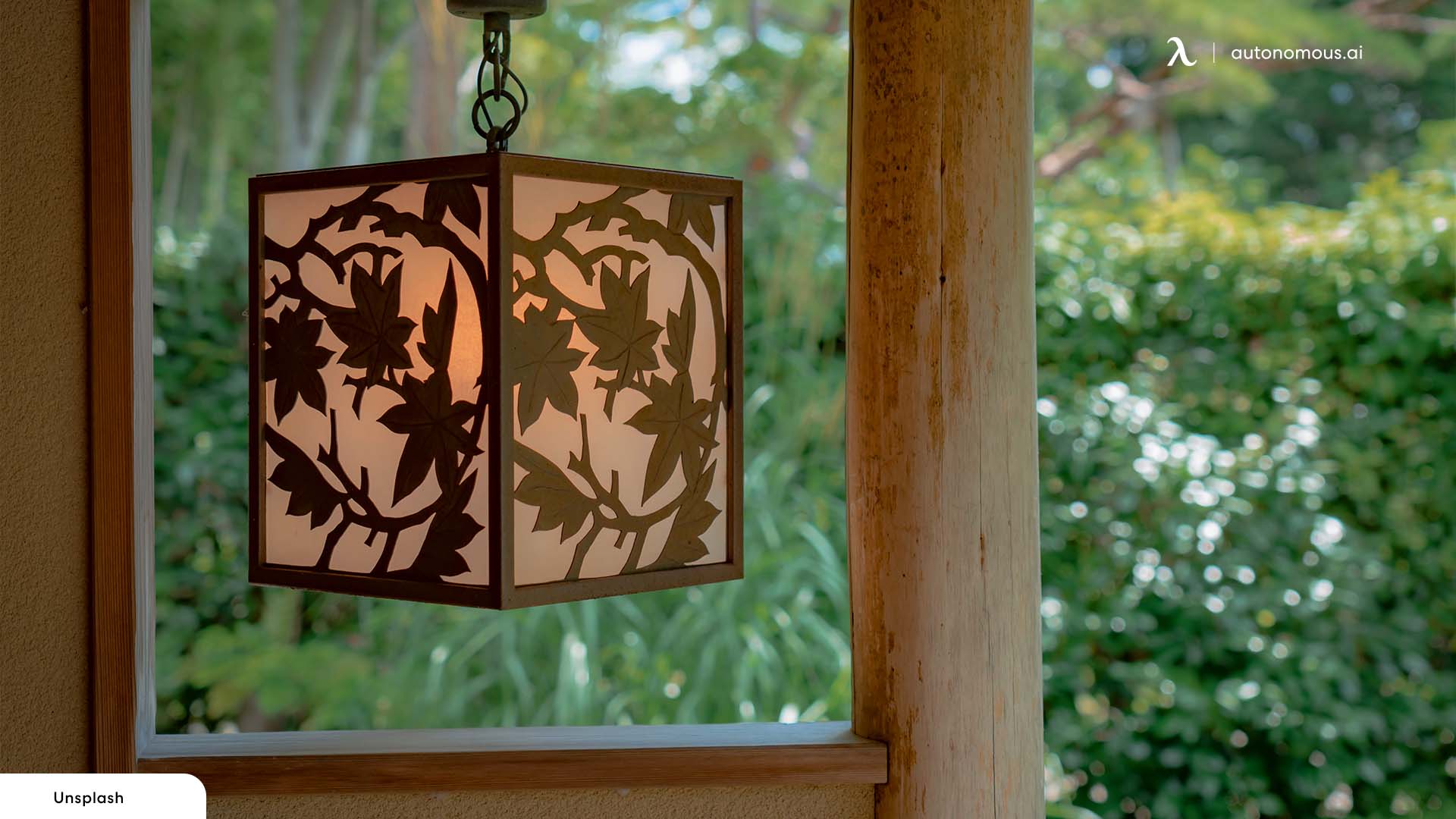/https://storage.googleapis.com/s3-autonomous-upgrade-3/static/upload/images/new_post/japanese-desk-decor-ideas-3954-1644466343288.jpg)
Japanese home décor has a special charm. People can relax in the interior design, which is mostly an imitation of their culture and traditions. Consider that you want to incorporate Japanese desk decor into your workspace. If so, then you're in the right place. Discover these Japanese office décor ideas that will transform your home into a beautiful, glam space.
1. Natural Elements
Make sure that you incorporate nature into your Japanese home décor ideas. By doing so, the natural world becomes a part of your Japanese desk accessories. We suggest introducing traditional Japanese plants like bamboo, cherry, and bonsai to help do this. In the absence of bamboo, you can also use any greenery. Plants such as palms or orchids are suitable alternatives for your Japanese-style desk décor.
2. Minimalist Touch

Remember that your office décor is all about simplicity and the Japanese minimalist interior design. Try to be as natural as possible. Japanese décor ideas emphasize the natural view by using expansive windows. Use large windows in your office interior design to maximize the natural light surrounding your Japanese-style desk setup.
3. Screens for Privacy
Almost all Japanese homes are furnished with a Shoji screen, which is called a traditional Japanese screen. Japanese people rent small apartments because house prices are extremely high. They conserve their limited space in all ways possible because of its limited availability. Sliding doors are one of the methods they use to conserve space. In contrast to swinging doors, which take up a lot of space, sliding doors save a great deal of space.
A Japanese screen originally consisted of transparent paper mounted on a wooden frame. You can buy online screens made of glass panels in new versions. It's remarkable to see that these screens do not obstruct the sun or natural light like doors do. To create a Japanese interior, you can use sliding doors or screens instead of walls.
4. Bamboo or Other Woods

Asian cultures are hard to find without wood or bamboo. You can have wooden frames for your windows and doors; the walls can also be made of wood. There is also the option of using hardwood floors like cypress or red pine.
Bamboo enhances the feeling of naturalness in Japanese homes. It is a great addition. Bamboo can be used as a decorative element on walls and floors and provides a peaceful environment.
5. Bonsai and Indoor Hanging Plants
In Japanese desk decor and design, bonsai trees are used to bring nature indoors. It is more difficult to find these large green plants, so expect to spend more. Keeping bonsai trees at home ensures that your house is adorned with beauty. A bonsai tree can transform your home's appearance.
In most Japanese homes, hanging plants are an important decor aspect. After putting them in the pot, you can hang them on the patio. Another option would be to wrap them in transparent plastic.
6. Use lots of White and Beige

Use white office desk colors all over your home if you want the traditional Japanese style. Your walls, furniture, and floors can all be white. White is a good color option for Japanese who value space and prefer minimalist Japanese desk decors.
The room can look big even if you don't like white. So, if you don't like it or think it isn’t the best productive color, feel free to use any neutral color. Several Japanese color schemes for office principles, including natural light, make your home cleaner and more harmonious.
7. Add a Miniature Sand Zen Garden or Meditation Space
Suppose you value nature and are an outdoors person. Zen gardens would be great for you. Your home will not only have a Japanese touch but will also feel calm due to the design. Zen gardens do not have to be large to provide you with a soothing effect; even a smaller one will suffice.
Physically and mentally, you will benefit from daily meditation. It costs you nothing to meditate on yourself. You just need to make sure there is enough room for everyone in your family to fit in that area of your home. If you're feeling stressed, you might benefit from a meditation space.
8. Woodblock Prints

You can decorate the walls in your house with woodblock prints. These prints feature attractive colors reminiscent of historical artwork. A flower or bonsai plant can be used to make your print. The artwork below shows nature. This is a perfect blend of simplicity and nature that Japanese culture adores.
9. Add an Aquarium
As an island nation, Japan's art and myths are heavily influenced by water. You'll be doing Japanese culture a lot of good by bringing in the water element. In addition to that, you'll honor the people's love for the outdoors. If you want a pond in your compound, look for Koi designs. Also, consider the Great Wave by Hokusai for your walls.
10. Switch to Decorative Paper Lanterns

Paper lanterns are an integral part of Asian culture, particularly in Japan. A beautiful, safe version has replaced the candles that used to be used before. As you can see here, electric bulbs are used in contemporary lanterns, and they blend in well with the surrounding décor.
11. Keep Your Space as Open as Possible
In order to follow the minimalist principle of Japanese design, make sure you include a lot of open space. The more open space you have, the better the calming effect will be. Additionally, a less congested room will have a more natural appearance, a cornerstone of Japanese desk decor.
12. Wall Decor
Most Japanese homes have plain walls, such as brown or white. Don't like it? Just decorate the walls to make them your own. Remember to adhere to the principle of Japanese minimalism when selecting wall stickers. The stickers are available online or at DIY stores, and they should be easy to remove without damaging walls.
13. You can Combine Western and Japanese Style Elements
Combine western and Japanese elements to retain the western feel and have a Japanese touch. With carpets on top, incorporate low tables with tatami mats. Creating a fusion of both cultures is easy this way. Be careful not to go overboard, though. Avoid being too flashy by choosing neutral colors.
14. Cushions or Sofas Made for the Floor
Using floor cushions or sofas will help your living room appear larger. Zabutons are floor cushions placed next to a small table called chabudai. They can be used together to eat meals.
Subscribe for a 10% discount on your first order.
Sign up for our weekly update and be the first to know about our specials & promotions.
Verbreiten Sie es weiter

/https://storage.googleapis.com/s3-autonomous-upgrade-3/production/ecm/240417/april-10-off-offer-2024-1920x540-CTA.jpg)
/https://storage.googleapis.com/s3-autonomous-upgrade-3/production/ecm/240417/april-10-off-offer-2024-720x1200-CTA.jpg)
/https://storage.googleapis.com/s3-autonomous-upgrade-3/production/ecm/240415/bulk-order-apr-2024-offer-720x1200-CTA-min.jpg)

/https://storage.googleapis.com/s3-autonomous-upgrade-3/static/upload/images/new_post_author/admin-1.png)